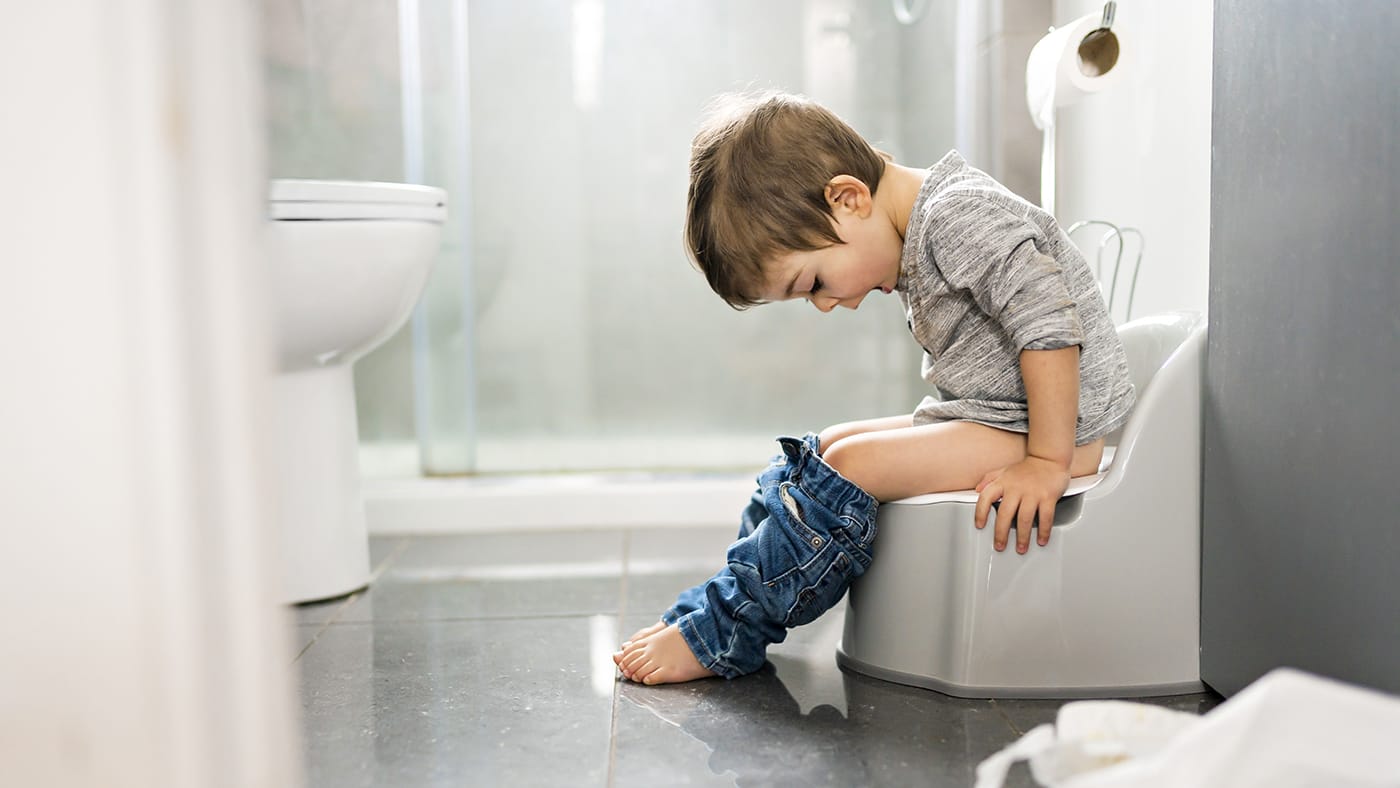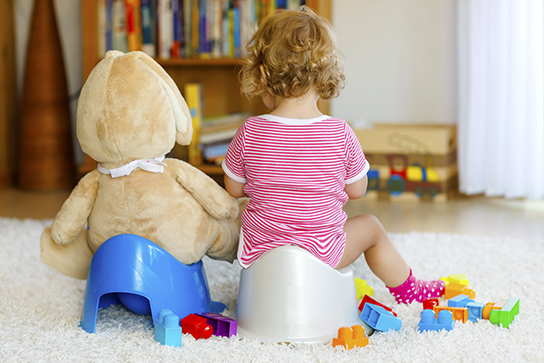The Complete Guide to Potty Training: Expert Tips for Success in 2025
The Complete Guide to Potty Training: Expert Tips for Success in 2025

Potty training represents one of the most significant developmental milestones in your child's early years. This comprehensive journey from diapers to independent toilet use can feel overwhelming for many parents, but with the right approach, knowledge, and patience, it becomes a positive experience that builds your child's confidence and independence.
Current research in 2025 emphasizes child-led approaches and positive reinforcement techniques that respect your toddler's developmental readiness. Gone are the days of rigid timelines and one-size-fits-all methods. Today's potty training strategies focus on understanding each child's unique needs, recognizing readiness signs, and creating supportive environments that encourage success while minimizing stress for both parent and child.
Understanding Potty Training: What Every Parent Needs to Know
Potty training, also known as toilet training, is the process of teaching your child to recognize bodily sensations, communicate their needs, and independently use the toilet for urination and bowel movements. This developmental milestone typically occurs between 18 months and 4 years of age, with most children achieving daytime dryness between 2 and 3 years old.

The Science Behind Toilet Training
Successful potty training requires the development of several key abilities:
- Physical readiness: Bladder capacity development, muscle control, and motor skills necessary for walking, sitting, and removing clothing
- Cognitive development: Understanding cause and effect, following simple instructions, and recognizing bodily sensations
- Emotional maturity: Desire for independence, ability to communicate needs, and willingness to cooperate
- Social awareness: Understanding expectations and wanting to please caregivers or imitate older children
Recognizing Readiness: When to Start Potty Training
One of the most critical factors in successful potty training is timing. Starting before your child is ready can lead to frustration, resistance, and setbacks. Pediatric experts emphasize looking for multiple readiness signs rather than focusing solely on age.

Physical Signs of Readiness
- Staying dry for longer periods (2+ hours)
- Showing interest in the bathroom or watching others use the toilet
- Demonstrating physical stability while walking and climbing
- Having regular, predictable bowel movements
- Waking up dry from naps or in the morning
Behavioral and Emotional Indicators
- Expressing discomfort with dirty diapers or asking to be changed
- Showing signs of independence in other areas
- Communicating bathroom needs with words, gestures, or facial expressions
- Demonstrating ability to follow simple two-step instructions
- Showing pride in accomplishments and desire for praise
Common Causes of Potty Training Challenges
Understanding why potty training difficulties arise can help parents address issues proactively and maintain realistic expectations throughout the process.
Developmental Factors
Every child develops at their own pace, and various factors can influence potty training readiness and success:
- Neurological development: The connection between brain and bladder/bowel control varies among children
- Physical maturation: Muscle development and coordination needed for toilet use
- Sensory processing: Some children may be more or less sensitive to wetness and bodily sensations
- Attention and focus: Ability to recognize and respond to internal cues
Environmental and Situational Challenges
- Major life changes (moving, new sibling, starting daycare)
- Inconsistent approaches between caregivers
- Stressful family situations or changes in routine
- Medical issues such as constipation or urinary tract infections
- Fear or anxiety about using the toilet
Benefits of Successful Potty Training

Successful potty training brings numerous advantages that extend far beyond the practical aspects of diaper elimination:
For Your Child
- Increased independence and self-confidence: Mastering this skill boosts self-esteem and autonomy
- Enhanced social opportunities: Many preschools and activities require potty training
- Improved hygiene and comfort: Freedom from wet or soiled diapers
- Better sleep quality: Less discomfort from nighttime diaper changes
- Positive body awareness: Understanding and responding to bodily functions
For Parents and Families
- Financial savings: Elimination of ongoing diaper costs
- Convenience and mobility: Easier outings without diaper bag necessities
- Environmental benefits: Reduced waste from disposable diapers
- Decreased laundry: Less frequent clothing and bedding changes
- Parental satisfaction: Pride in supporting your child's development
Proven Potty Training Solutions and Methods
:max_bytes(150000):strip_icc()/three-day-potty-training-tips-4071189-ae1e352b050243189a90647ff7d07fa7.png)
Based on current research and expert recommendations in 2025, several effective potty training approaches have emerged. The key is selecting a method that aligns with your child's personality, your family's lifestyle, and your available time commitment.
The Child-Led Approach (Brazelton Method)
This gentle, gradual method follows your child's natural developmental timeline and emphasizes cooperation over coercion:
- Allow your child to explore and become comfortable with potty equipment
- Introduce concepts gradually through books, songs, and play
- Encourage voluntary potty sitting, initially clothed
- Progress to regular potty breaks throughout the day
- Celebrate successes while maintaining patience with setbacks
The Three-Day Intensive Method
This concentrated approach works well for children showing strong readiness signs and families who can commit to intensive supervision:
- Day 1: Remove diapers completely, offer frequent potty opportunities, closely supervise
- Day 2: Continue intensive supervision, introduce short outings
- Day 3: Expand activities while maintaining consistent potty schedule
- Requires full commitment and minimal disruptions during training period
The Gradual Transition Method
This flexible approach works well for working parents or children who need more time to adjust:
- Start with regular potty breaks during convenient times
- Gradually increase underwear time while maintaining backup protection
- Use training pants or pull-ups as transitional tools
- Allow 6-12 weeks for complete transition
Essential Potty Training Equipment and Setup

Having the right equipment can significantly impact your potty training success. Choose items that prioritize safety, comfort, and ease of use for both child and caregiver.
Potty Chair vs. Toilet Seat Insert
Potty Chair Advantages:
- Child-sized and less intimidating
- Portable for different rooms or travel
- Feet can rest firmly on the ground
- Child feels more in control and secure
Toilet Seat Insert Benefits:
- Easier transition to regular toilet use
- Less cleanup and maintenance
- Space-saving option
- Often preferred by children who want to copy adults
Additional Helpful Items
- Step stool: Provides independence for handwashing and toilet access
- Training pants: Easier for children to manage than diapers
- Comfortable underwear: Special "big kid" underwear as motivation
- Flushable wipes: Gentler than toilet paper for learning hands
- Reward chart supplies: Stickers, stamps, or small prizes for motivation
Step-by-Step Potty Training Process

Phase 1: Introduction and Familiarization (1-2 weeks)
Begin by creating positive associations with potty training concepts:
- Read potty training books together daily
- Let your child explore potty equipment without pressure
- Establish bathroom vocabulary and routine language
- Practice sitting on potty fully clothed during story time
- Point out when diaper changes occur and discuss the process
Phase 2: Active Training (2-6 weeks)
Implement consistent potty break schedules and begin underwear transitions:
- Offer potty opportunities every 1-2 hours
- Use underwear during awake hours with backup protection if needed
- Establish pre and post-meal potty breaks
- Celebrate successes enthusiastically but briefly
- Handle accidents calmly with child participation in cleanup
Phase 3: Consistency and Independence (Ongoing)
Focus on building independent skills and handling various situations:
- Encourage child to recognize and communicate their needs
- Practice potty use in different locations and situations
- Gradually reduce scheduled potty breaks as child initiates
- Address nighttime training when daytime success is consistent
- Develop problem-solving skills for challenges
Expert Insights and Professional Recommendations
Leading pediatricians and child development experts emphasize several key principles that significantly improve potty training outcomes:
Dr. Sarah Johnson, Pediatric Development Specialist
"The most successful potty training approaches in 2025 focus on partnership rather than power struggles. Children who feel supported and empowered during this process develop better self-regulation skills that extend far beyond toilet use. Parents should remember that regression is normal and doesn't indicate failure – it's simply part of the learning process."
Current Research Findings
Recent studies published in pediatric development journals highlight several important trends:
- Timing flexibility: Children trained between 24-36 months show similar long-term success rates
- Positive reinforcement effectiveness: Praise and celebration work better than punishment or shame
- Consistency import


